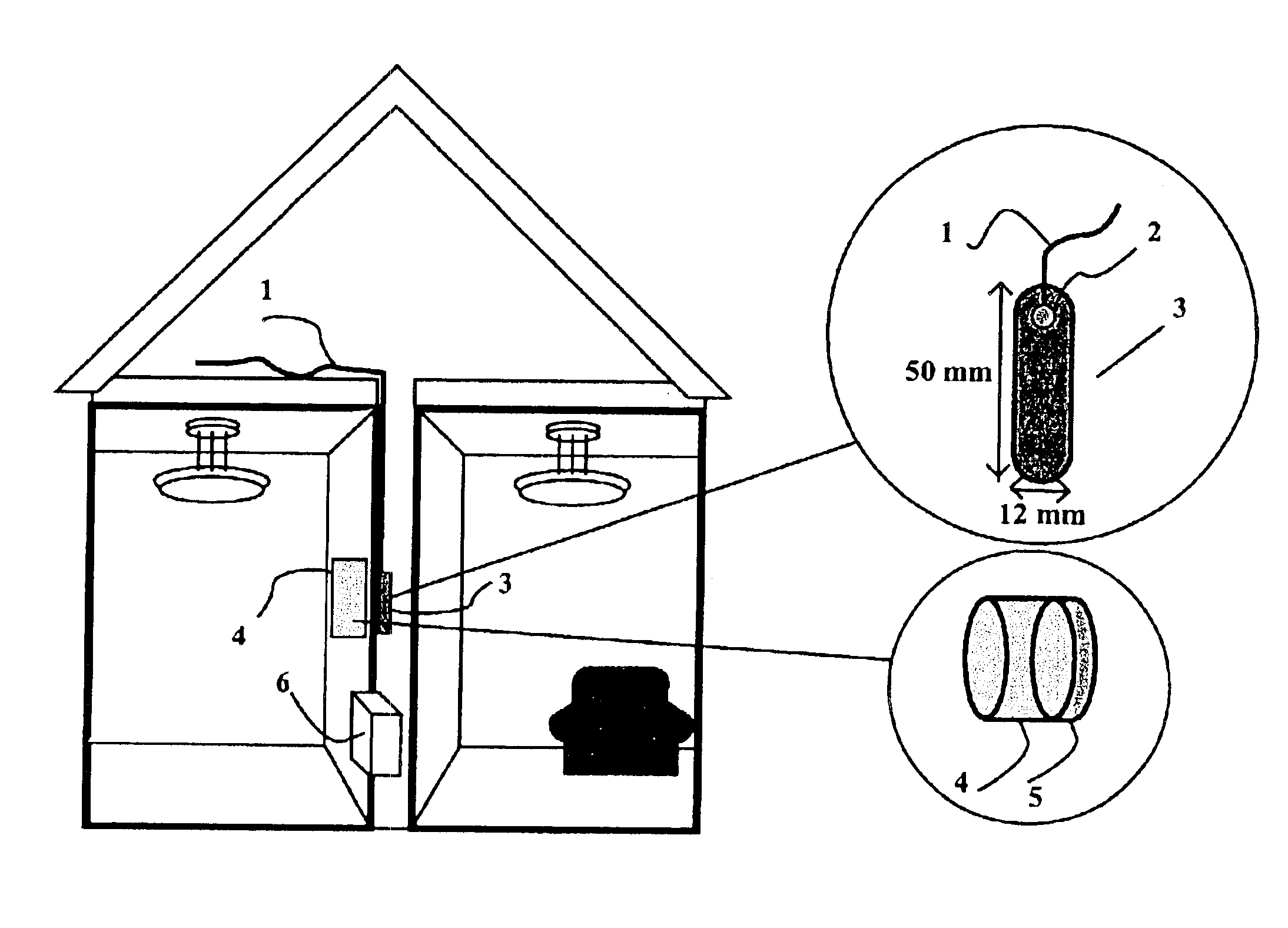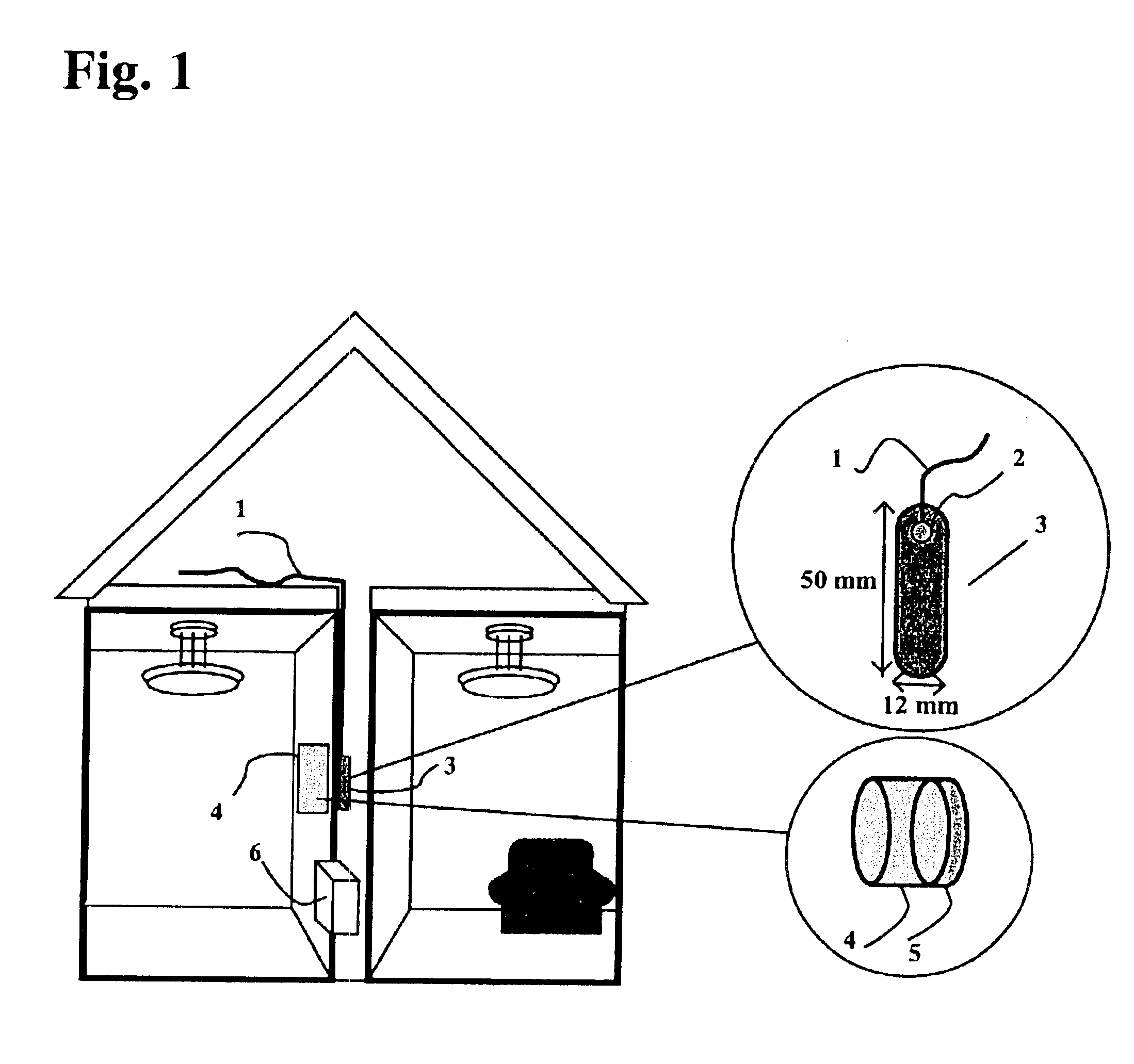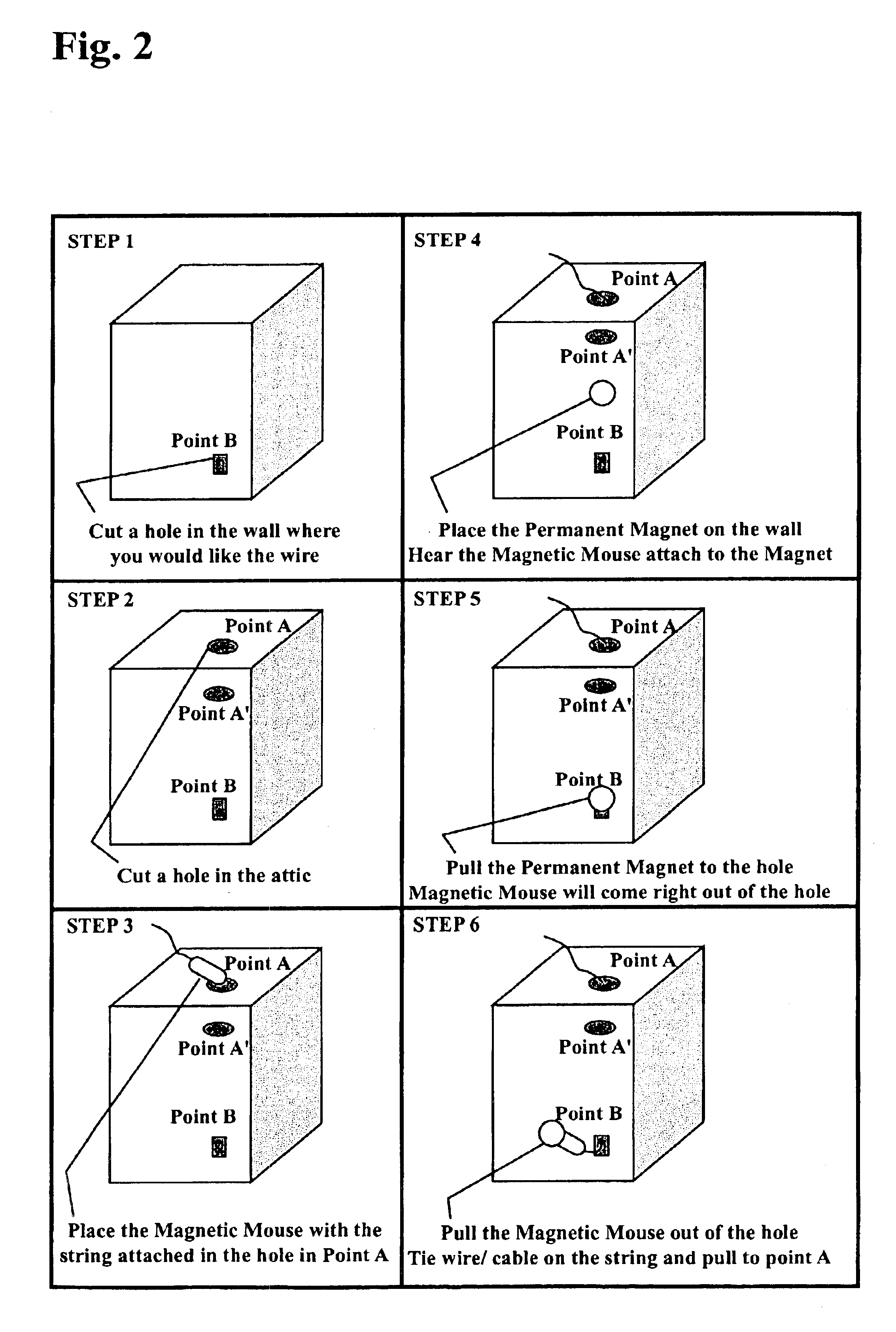Apparatus for fishing telecommunication or electrical wires, optical cables or conduit behind walls
a technology for optical cables and cables, applied in the direction of cables, special-purpose vessels, cables laying apparatus, etc., can solve the problems of wasting time, energy and expense, affecting the operation of the apparatus, and reducing the service life of the apparatus, etc., to achieve reliable operation, easy to use, and cost-effective
- Summary
- Abstract
- Description
- Claims
- Application Information
AI Technical Summary
Benefits of technology
Problems solved by technology
Method used
Image
Examples
Embodiment Construction
[0022]Adding additional wiring within pre-existing buildings is frequently necessary. Such additional wiring is generally required to create new outlets in a room, or to install telecommunication lines such as high-speed Internet connections or optical network connections. During installation of such wiring it is necessary to create pathways behind pre-existing walls. Installation of these connections usually requires drilling holes or cutting slots within the sheetrock or plaster walls or ceilings in order to string the wiring. It is often more difficult to run connections through a ceiling since gravity does not assist following a given track. Consequently, devices previously employed by prior art workers have heretofore been unable to successfully string-up a connection without drilling a plurality of cutting holes through the ceiling.
[0023]The present invention provides a low cost reliable apparatus comprising a magnetic mouse comprising a soft magnetic body, typically steel, co...
PUM
 Login to View More
Login to View More Abstract
Description
Claims
Application Information
 Login to View More
Login to View More - R&D
- Intellectual Property
- Life Sciences
- Materials
- Tech Scout
- Unparalleled Data Quality
- Higher Quality Content
- 60% Fewer Hallucinations
Browse by: Latest US Patents, China's latest patents, Technical Efficacy Thesaurus, Application Domain, Technology Topic, Popular Technical Reports.
© 2025 PatSnap. All rights reserved.Legal|Privacy policy|Modern Slavery Act Transparency Statement|Sitemap|About US| Contact US: help@patsnap.com



